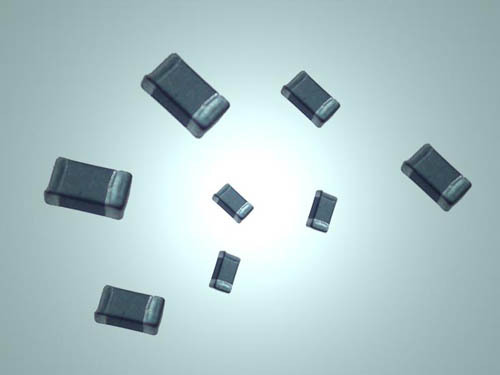
Magnetic beads (EMI beads) are designed to suppress high-frequency noise and spike interference on signal lines and power lines, and also have the ability to absorb electrostatic pulses. Magnetic beads are used to absorb UHF signals. Some RF circuits, PLLs, oscillator circuits, and ultra-high frequency memory circuits (DDR SDRAM, RAMBUS, etc.) all require magnetic beads in the input section of the power supply. Energy components, used in the LC oscillation circuit, low-frequency filter circuits, etc., its application frequency range rarely exceeds 50 MHZ. The function of the magnetic beads (EMI beads) is mainly to eliminate the RF noise existing in the transmission line structure (circuit). The RF energy is an AC sine wave component superimposed on the DC transmission level, the DC component is a useful signal needed, and the RF RF energy is useless electromagnetic interference along the line to transmit and radiate (EMI). To eliminate these undesired signal energies, the chip beads act as high-frequency resistors (attenuators), allowing the DC signal to pass through and filter out the AC signal. Usually the high-frequency signal is above 30MHz, however, the low-frequency signal is also affected by the chip beads. The chip beads are composed of soft ferrite materials and constitute a monolithic structure with a high volume resistivity. Eddy current loss is inversely proportional to the resistivity of the ferrite material. Eddy current loss is proportional to the square of the signal frequency.
Benefits of using chip beads: Miniaturization and weight reduction High impedance in the RF noise frequency range, eliminating electromagnetic interference in the transmission line. Closed magnetic circuit structure to better eliminate the signal string. Excellent magnetic shielding structure. Reduce the DC resistance to avoid excessive attenuation of the useful signal. Significant high-frequency characteristics and impedance characteristics (better eliminate RF energy). Eliminates parasitic oscillations in high-frequency amplifier circuits. Effectively operates in the frequency range from a few MHz to a few hundred MHz. To properly select the magnetic beads (EMI beads), the following points must be noted: 1. How much frequency range does the unwanted signal need; 2. Who is the noise source? 3. How much noise attenuation is required. 4. Environmental conditions What (temperature, DC voltage, structural strength); 5, circuit and load impedance; 6, whether there is room to place beads on the PCB board (EMI beads); the first three by observing the impedance frequency curve provided by the manufacturer can judgment. The three curves in the impedance curve are very important, namely resistance, inductive reactance and total impedance. The total impedance is described by ZR22Ï€fL()2+:=fL. From this curve, select the type of bead that has the highest impedance in the frequency range where you want to attenuate the noise and where the signal attenuation is as small as possible at low and DC. Chip beads can affect the impedance characteristics under excessive DC voltage. In addition, if the operating temperature rises too high or the external magnetic field is too large, the impedance of the beads will be adversely affected. The reason for using chip beads and chip inductors is whether chip ferrite beads or chip inductors are used primarily for applications. Chip inductors are needed in the resonant circuit. When it is necessary to eliminate unwanted EMI noise, the use of chip beads is the best choice.
Chip beads and chip inductors applications:
Chip inductors: radio frequency (RF) and wireless communications, information technology equipment, radar detectors, automobiles, cellular phones, pagers, audio equipment, PDAs (personal digital assistants), wireless remote control systems, and low-voltage power supply modules.
Chip beads: clock generation circuit, filtering between analog and digital circuits, I/O input/output internal connectors (such as serial, parallel, keyboard, mouse, long-distance telecommunications, local area network), radio frequency (RF) circuits Between EMI-prone and disturbance-prone logic devices, high-frequency conducted noise is filtered out of the power supply circuit, and EMI noise is suppressed in computers, printers, video recorders (VCRS), television systems, and mobile phones.
Right Angle Bldc Motor,L298N Servo Motor,L293D Servo Motor,500W-2000W Dc Servo Motors
Jinan Keya Electron Science And Technology Co., Ltd. , https://www.keyaservo.com